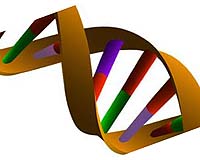| . |  |
. |
Chicago IL (SPX) Jan 08, 2010 Researchers at the University of Chicago are studying communication in animals to improve their understanding of how language develops in humans and how they use it. "We find compelling evidence that language is a phenomenon of evolutionary biology and within the reach of biological investigation," write biologist Daniel Margoliash and psychologist Howard Nusbaum in "Language: The Perspective from Organismal Biology," an opinion piece in the current issue of the journal Trends in Cognitive Sciences. The two researchers challenge the position held by other scholars, including language theorist Noam Chomsky, that the way people develop language is uniquely human and unrelated to communication systems in other animals. In that theory, the ability to speak is contained in a "black box" in the brain and can be opened by informal contact as a baby begins recognizing sounds or a toddler begins speaking. Recent research, including studies at the University on songbirds, questions that position and argues for inclusion of evolutionary biology as a means of learning more about how language develops. Songbirds also show a human-like capacity to learn complex vocal patterns, the researchers have found. "This will help us understand the black box of language better," said Margoliash, Professor in Organismal Biology and Anatomy, who has studied song development in birds. "If we're going to make progress understanding how language develops, we need to look at all the evidence, and that includes what we can learn from biology," said Howard Nusbaum, Chair of Psychology and an expert on speech development. Researchers have long studied vocal communication in animals, including birds, whales, porpoises, and non-human primates. Those patterns provide a way of understanding how human language develops if subjected to the right research program, the two Chicago scholars said. "Animals have more intelligence than most people give them credit for. Crows are capable of developing tools, for instance. Jays have a sense of mental time travel. The problem is that we haven't had a way to measure that intelligence," Margoliash said. The evidence that connects human and animal communication has provided conflicting conclusions. Scientists have not agreed on how communication abilities moved through evolution on their way to the human. Some studies with non-human primates, the close relatives of humans, suggest that there may be no connections at all. Work by Margoliash and Nusbaum shows that starlings are capable of abstract learning of vocal structures. A biological feature in starlings, a large well-defined forebrain substantially devoted to vocal learning, could account for their ability to learn complex vocal tasks, Margoliash said. In contrast, the monkeys that failed to learn the task are not vocal learners. But that experiment was in fact helpful, because it suggested such studies could be done, and it led Nusbaum and Margoliash to their work with starlings. A new research horizon is opening up, as scholars go beyond considering human language and behavior to be uniquely human and embrace biological approaches, the authors conclude.
Share This Article With Planet Earth
Related Links University of Chicago All About Human Beings and How We Got To Be Here
 New Approach Tracks Evolution's Footprints In Human Genome
New Approach Tracks Evolution's Footprints In Human GenomeBoston MA (SPX) Jan 08, 2010 Fossils may provide tantalizing clues to human history but they also lack some vital information, such as revealing which pieces of human DNA have been favored by evolution because they confer beneficial traits - resistance to infection or the ability to digest milk, for example. These signs can only be revealed through genetic studies of modern humans and other related species, though the ... read more |
|
| The content herein, unless otherwise known to be public domain, are Copyright 1995-2009 - SpaceDaily. AFP and UPI Wire Stories are copyright Agence France-Presse and United Press International. ESA Portal Reports are copyright European Space Agency. All NASA sourced material is public domain. Additional copyrights may apply in whole or part to other bona fide parties. Advertising does not imply endorsement,agreement or approval of any opinions, statements or information provided by SpaceDaily on any Web page published or hosted by SpaceDaily. Privacy Statement |